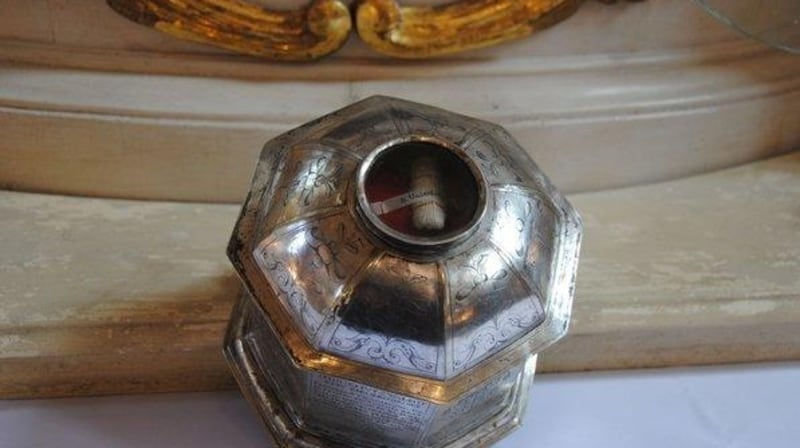Love is in the air today when couples flock to Whitefriar Street Church in Dublin and the Shrine of St Valentine.
The reliquary contains a vessel “tinged with blood” of the saint, along with a box with relics wrapped in paper, tied up with ribbon and held together with wax seals that have never been broken.
But Dublin doesn’t have a monopoly on the saint. Some 2,000km east, the Polish town of Chelmno will on Wednesday also welcome thousands of couples to its own reliquary in St Mary’s Assumption parish church.
The octagonal silver vessel dating back to about 1630 – two centuries before the remains arrived in Dublin – displays a relic under a glass dome-shaped lid which can be kissed.
On the Feast of Lupercalia, Roman boys were allowed to draw the name of a girl and spend the day with her
The relic, according to a report from 1830, “is the size of about two fingers”. Since 2002, the reliquary has been on public display below a painting depicting the beheading of St Valentine.
Tourist attraction
Chelmno has turned its famous saint into a big tourist attraction, with bakers and confectioners selling special Valentine rolls and heart-shaped treats.
Complicating the love affair with St Valentine is that there may have been at least two individuals of that name, martyred in Italy in the late 3rd century.

The Italian Valentines rose to fame in 496 when Pope Gelasius I dedicated February 14th as the saint's holy day. Previously it had been a holiday for Juno, the Queen of the Roman gods and goddesses.
A day later, on the Feast of Lupercalia, Roman boys were allowed to draw the name of a girl and spend the day with her.
Traditions surrounding St Valentine as the patron saint of lovers appear to date back to Geoffrey Chaucer in the 14th century. Today at least 10 different churches claim to hold relics of St Valentine – from Madrid, Prague and Vienna to Birmingham and Glasgow.
Not satisfied with the sealed packages and bits of bone displayed elsewhere, Rome’s Basilica of Santa Maria displays a skull discovered in the early 1800s which it claims to be that of the man himself, wearing a crown of flowers.
Ireland's ambassador to Poland Gerard Keown is delighted to have another connection between the two countries, alongside those of culture, business and the many Irish-Polish families.
“It’s wonderful to think we can add a shared love of St Valentine to the list,” he said.
Some 18 centuries on the message of St Valentine- remains unchanged: spread the love.









